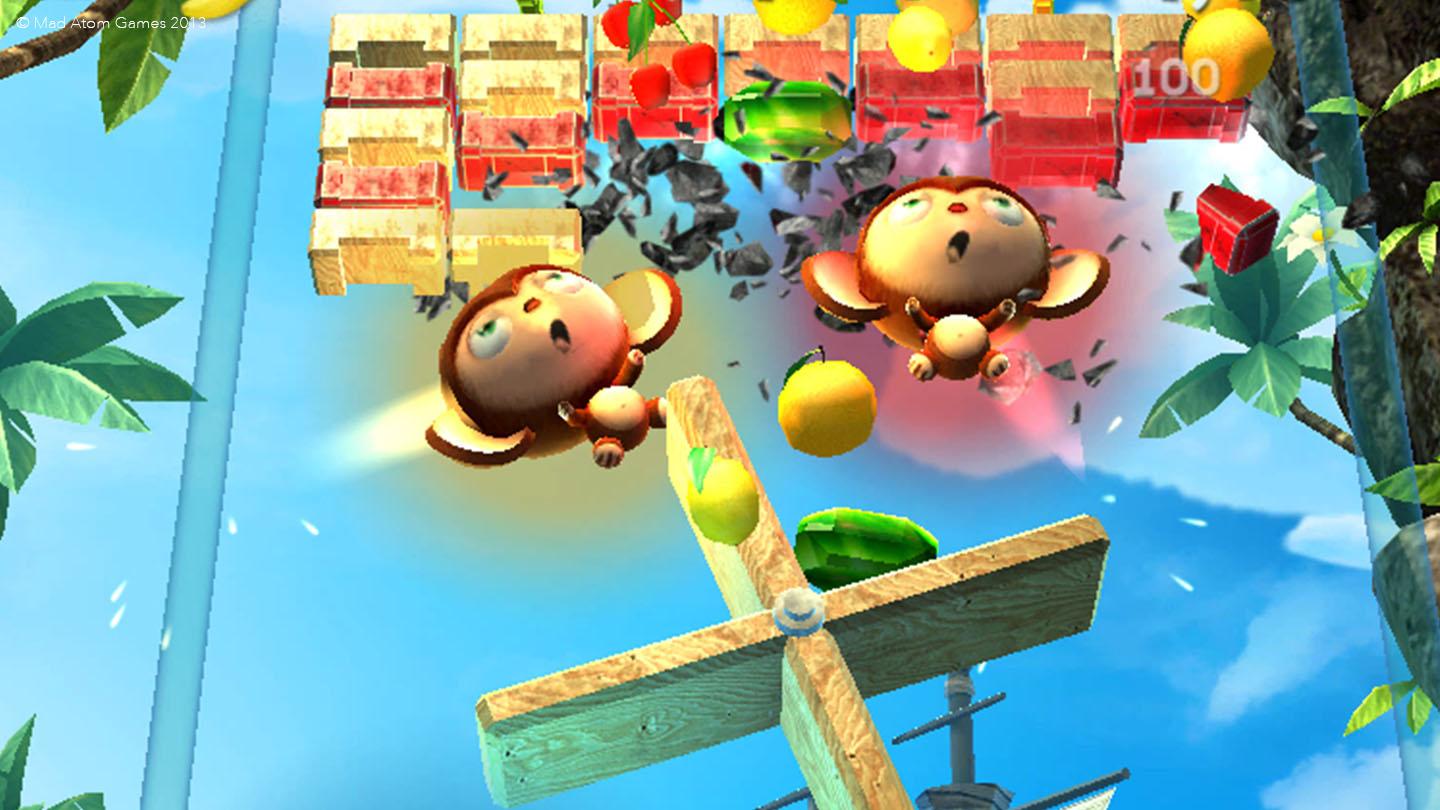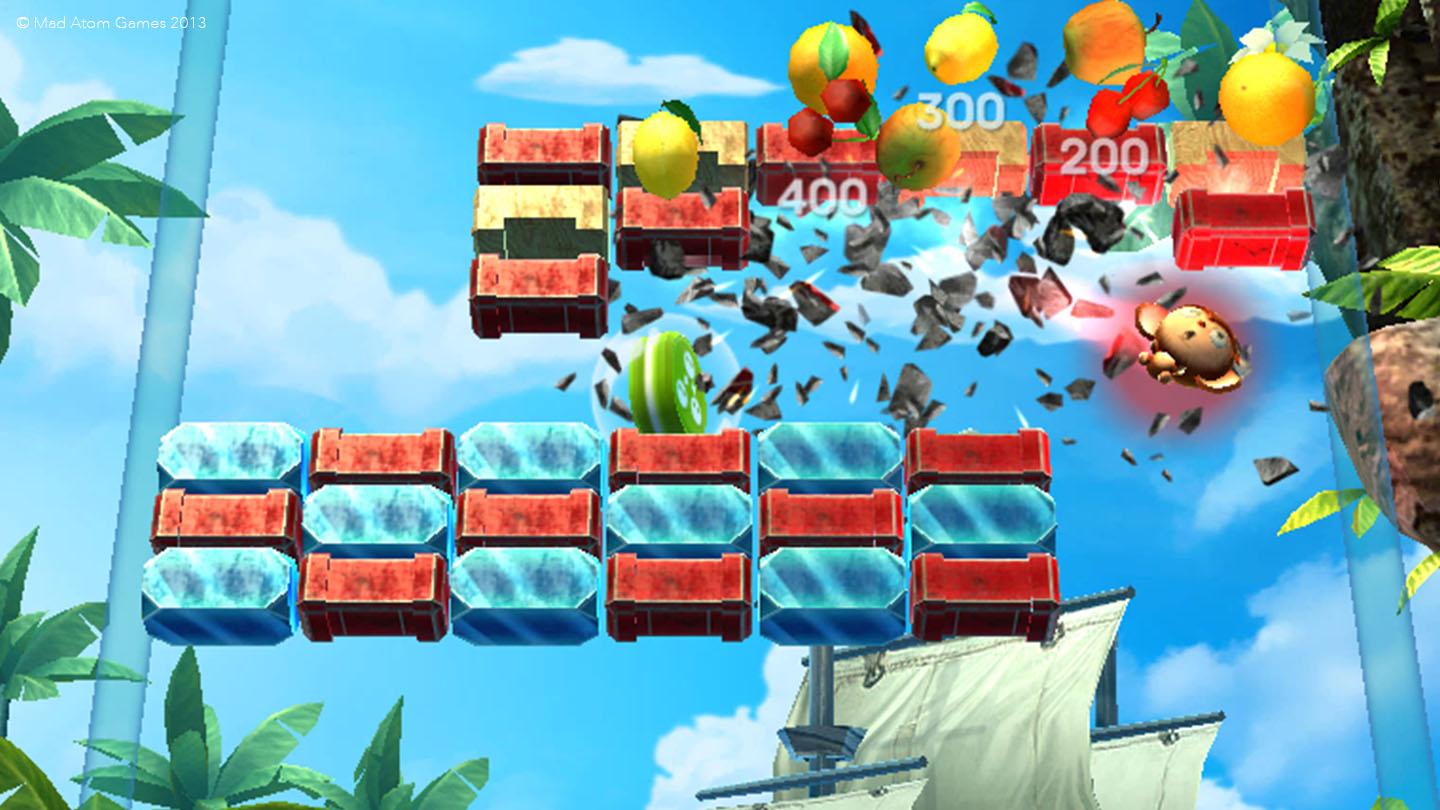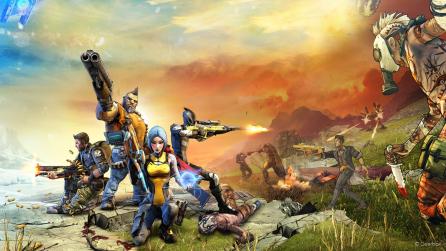Gaming
Modo makes Monkey Slam an instant app store hit
Mad Atom Games uses Modo to carve out its niche on iOS games such as Monkey Slam and the CSR Classics racing game
What do you do when the publisher-owned AAA game studio you're a part of gets closed down? For Steve Wilding and a few former colleagues at Black Rock Studio, the solution was simple: scale down and start your own indie operation. The transition from working on large-scale AAA console game titles to smaller mobile games proved a welcome change of pace for the newly-formed team at Mad Atom Games, who made extensive use of Modo to craft its popular iOS gaming debut, Monkey Slam.
The closure of Brighton, UK-based AAA developer Black Rock Studio back in 2011 was just the catalyst Wilding needed to embark on something fun and fresh. Together with his Black Rock pals Balor Knight and Julian Adams, he co-founded Mad Atom Games shortly afterwards. The trio had all previously worked together on both Pure and Split/Second -- two high-gloss AAA extreme racing games launched on Xbox 360 and PS3 consoles -- so forging a new studio together was an exciting prospect.
"We wanted to get experience making mobile and tablet games and decided to make a simple game that was really fun to play," explains Wilding. The team approached mobile game publisher Chillingo and pitched a project that would put a fresh spin on the classic brick breaker genre. The core concept for the game centered around a giant ape who hurled his smaller monkey comrade skyward to break obstacles and knock down fruit to collect. The idea was a hit.
I'm not a fan of UV'ing generally, but in Modo it's just so fast and easy to do, plus there's a bunch of great UV scripts and plug-ins aimed specifically at game art creation which save even more time.
Monkey Slam got a green light, and Mad Atom Games dove into development of its first independent game as a new studio. "It was a big learning curve for us and very different from console development, but we learned so much from making the game, including the experience of working with an external publisher," says Wilding.
Working as a small team with each member wearing multiple hats meant everyone had to pick up additional skills and expand their roles to better cover the different needs of the project. For Wilding, that meant jumping from environmental art -- he handled lighting for Pure and much of Split/Second -- to doing all of the game art on his new studio's first game.
"My background was world art, which was a far cry away from all the other art tasks I had to do on Monkey Slam," he says. "I had to quickly learn new stuff like particle VFX, UI, and making simple, cute characters."
Having used Modo at Black Rock Studio, it helped ease him into the role of being the sole artist for their iOS debut and make Monkey Slam's bright and colorful visuals really shine.

Monkeying around with Modo
Wilding used Modo for all of Monkey Slam's 3D asset creation and rendering, which ranged from environmental assets, characters, and particle sprite animations to promotional art and even the app icon itself. He started by roughing up some 2D concept art for the team to whittle down into its favorite picks. From there, he used Modo's sculpting tools to create 3D mockups to get a feel for what the silhouette forms looked like from various angles. This helped create a target vision for what the game would look like and also let the team make adjustments easily throughout the early stages of the design process.
"The small monkey had to have a ball shaped head with a tiny body, as he pivoted around his head," he explains. "The ape was a lot harder to figure out, and we tried various shaped heads until we ended up using palm leaves as a hat to bounce the little monkey from."
Aside from pairing nicely with Unity's game engine, Modo's work plane and features like action centers and fall offs were invaluable for speeding up many of the tasks during the modeling and UV phase, says Wilding. "I'm not a fan of UV'ing generally, but in Modo it's just so fast and easy to do, plus there's a bunch of great UV scripts and plug-ins aimed specifically at game art creation which save even more time."
The topology tools proved particularly useful for character design and work on some of the larger background objects, he says. In order to keep the frame rate zippy and the file size down, all of the foliage in the game is opaque without any additional alpha textures. To give it more life, he used a "wind shader" in Unity to blow the leaves around.
"This was achieved by using Modo's vertex weighting tools to paint which parts were flexible," he says. "We used the same tech for the water and also the sails on the pirate ship. We baked vertex AO into the foliage to give them more depth as well."
Creating Monkey Slam's app icon was also an iterative process that benefited from Modo's flexibility too. Wilding had to create a ton of different icon mockups to run by Chillingo, and Modo was great for setting up poses and color variations to experiment with, he says.
I think it's perfect for indie developers in so many ways. Aside from the fact it's super intuitive, I've not known a package where you get so much bang for the buck.
Modo and indie devs: a perfect match
When you're working as part of a smaller studio, having powerful tools that streamline the workflow and cut down on the time it takes to create assets is critical. As someone who's used Maya® and other 3D modeling programs in the past, Wilding says he's a big fan of Modo for game development.
"I think its perfect for indie developers in so many ways," he says. "Aside from the fact its super intuitive, I've not known a package where you get so much bang for the buck. Not only can you use it for in-game assets, but you can do all your promotional and high end art in the same package."
Support from the Modo community is also a great perk too, he adds, since there a tons of talented and friendly artists in the forums who've crafted free video content and tutorials to help newcomers get a jump-start.
"To me its biggest strength is how intuitive it is to use," Wilding says of Modo. "When it comes to rendering scenes and adjusting materials you just can't beat the speed of the preview renderer in Modo. I can't tell you how many hours that's saved me when I need to quickly mock something up and render a shot. Plus, it feels like fewer button clicks to get scenes setup for rendering compared to other 3D apps."
Not only can you use it for in-game assets, but you can do all your promotional and high end art in the same package.

The path ahead
Since the successful launch of Monkey Slam, Wilding and his team converted CSR Racing to Mac. They've also have partnered up with Boss Alien and Natural Motion Games to help develop polished hot-rod racer CSR Classics for iOS. That's been a lot of fun to work on, he says, and they're continuing to support it with new updates and features.
"I don't particularly miss working on bigger projects," he says, looking back to his AAA days. "There's nothing better than working with a smaller dev crew where we all have to be more generalists and end up working in all sorts of job roles."


